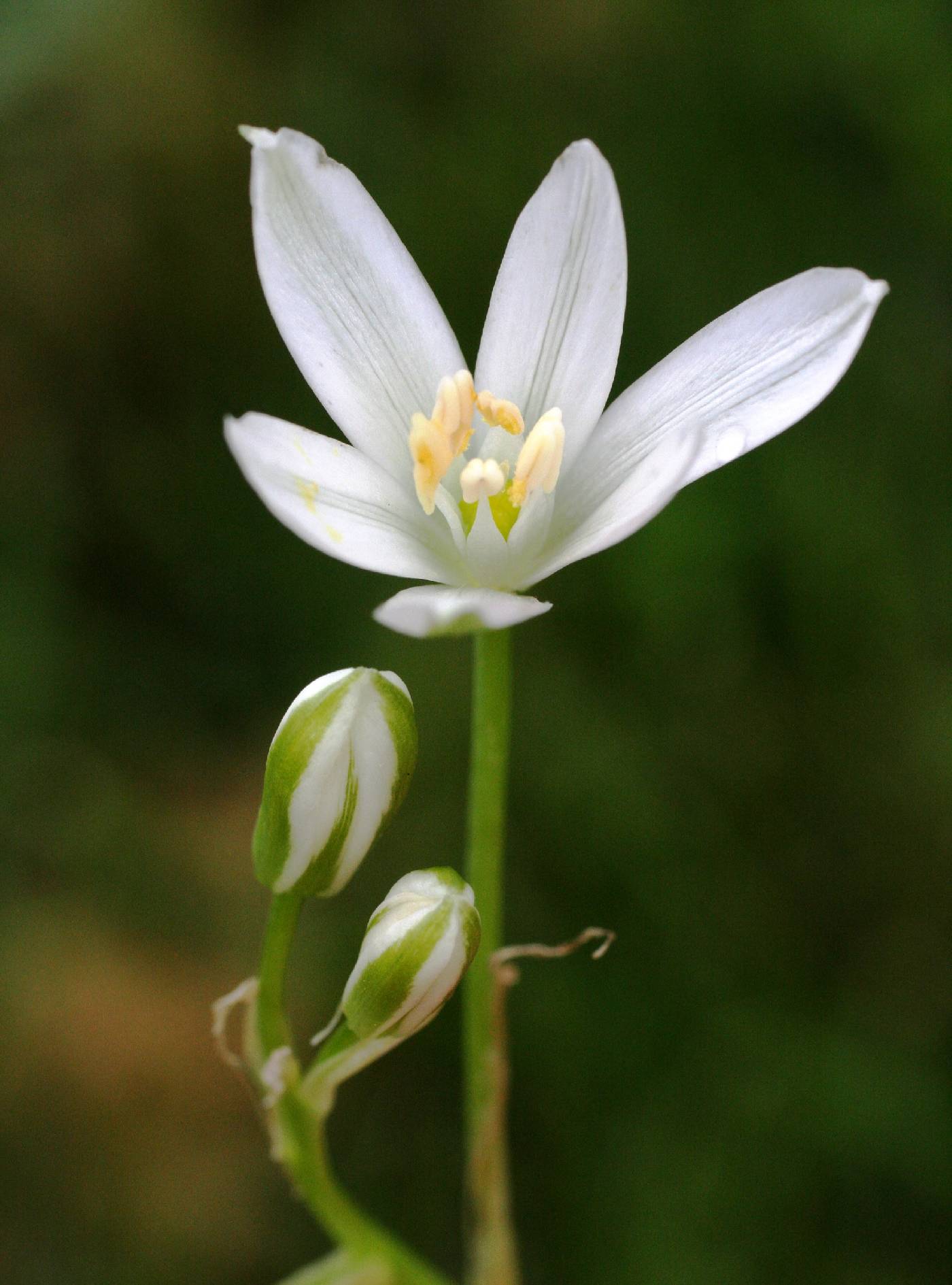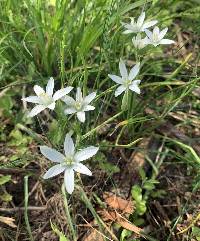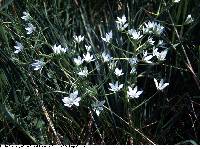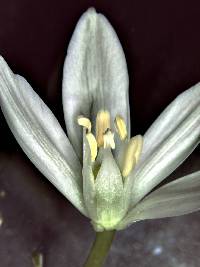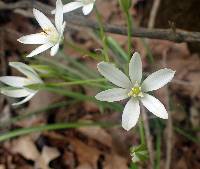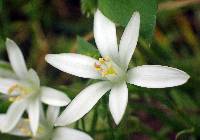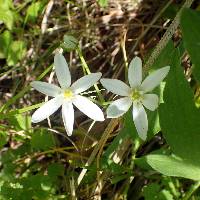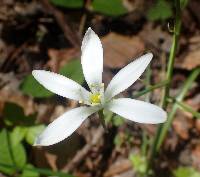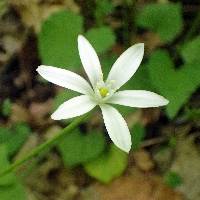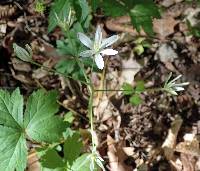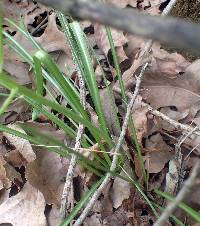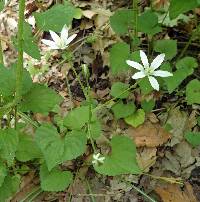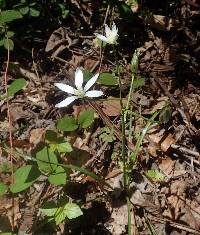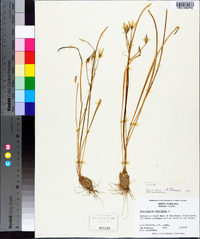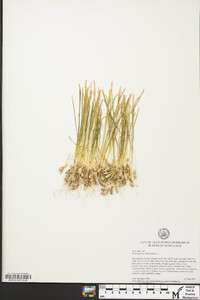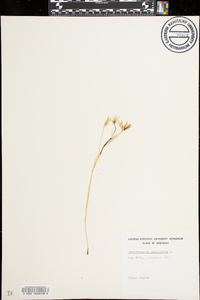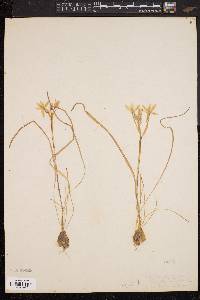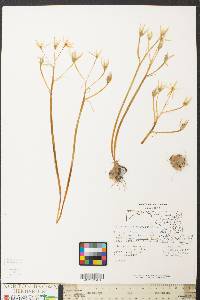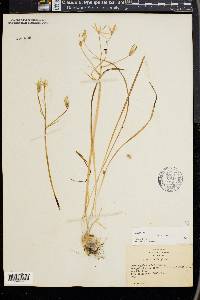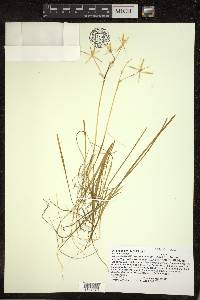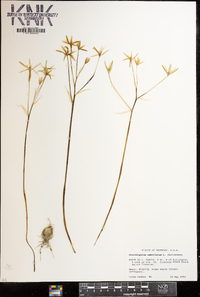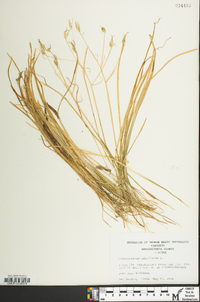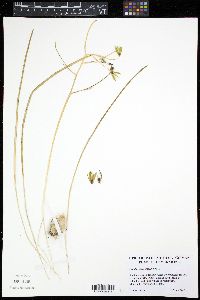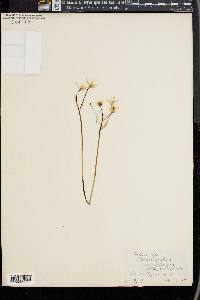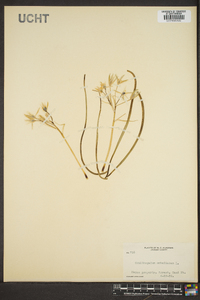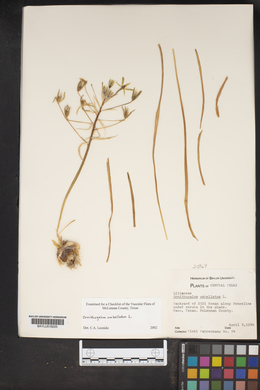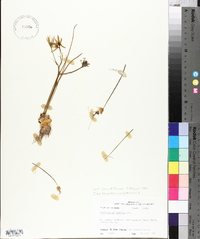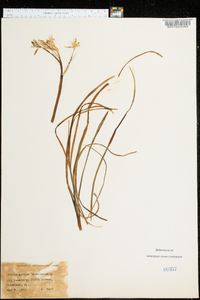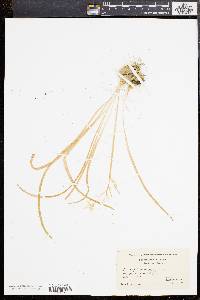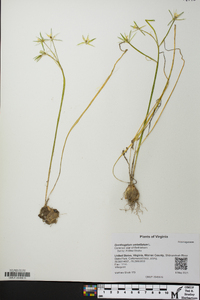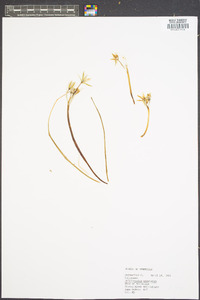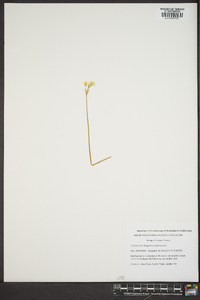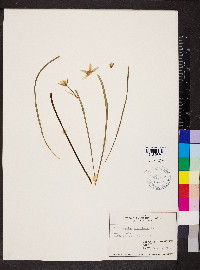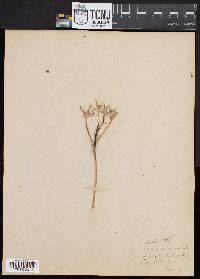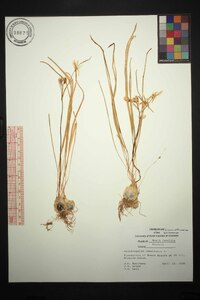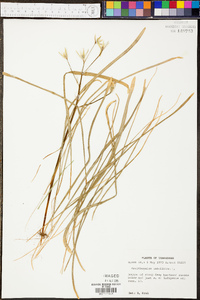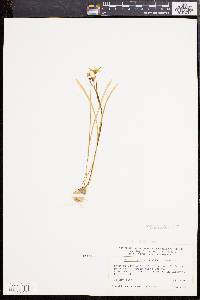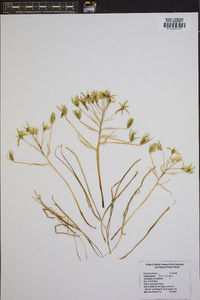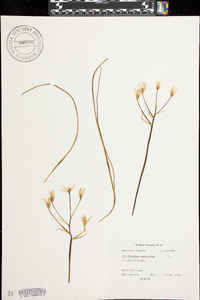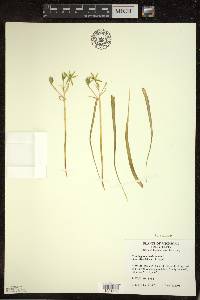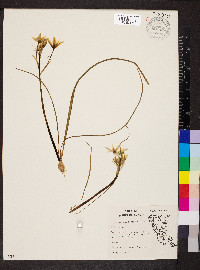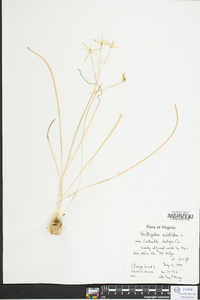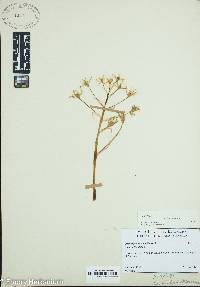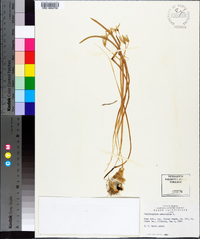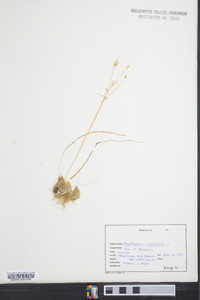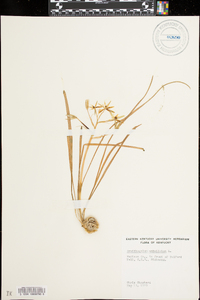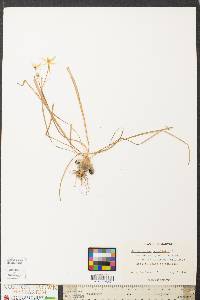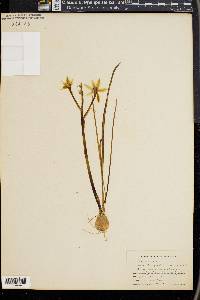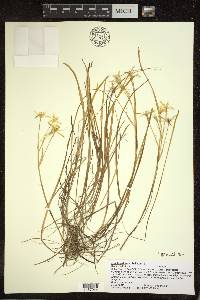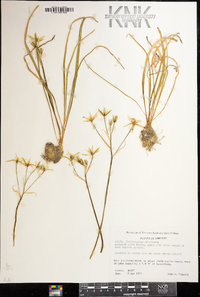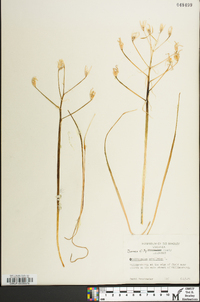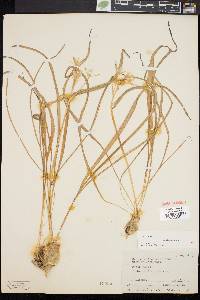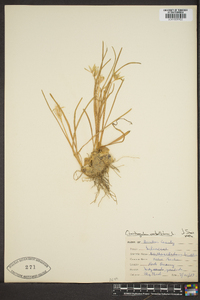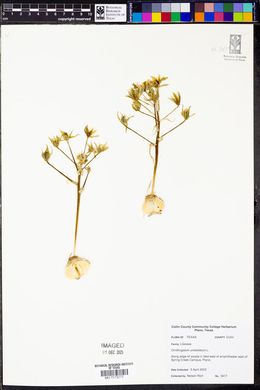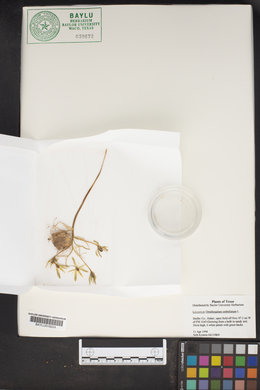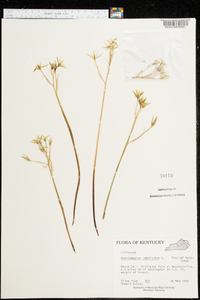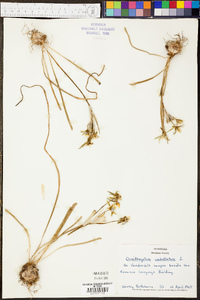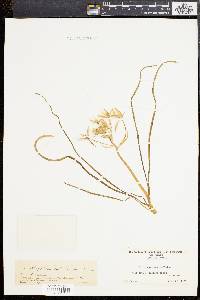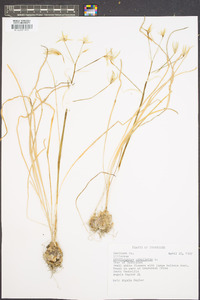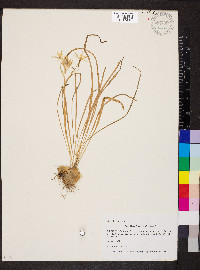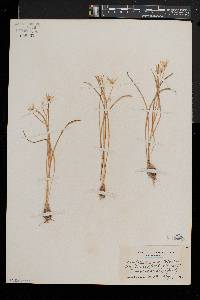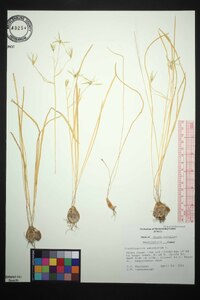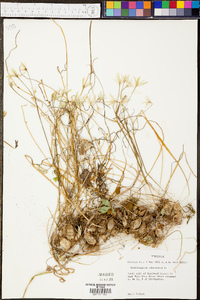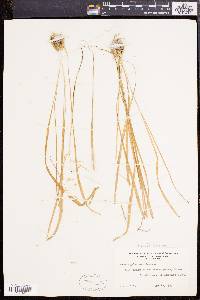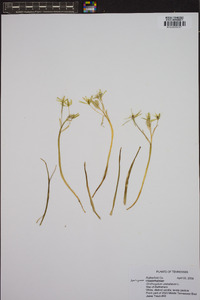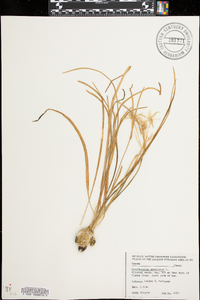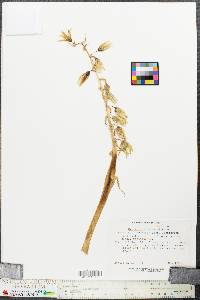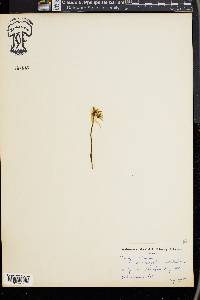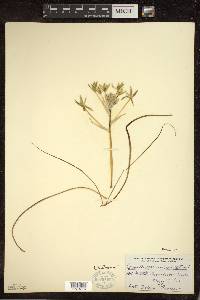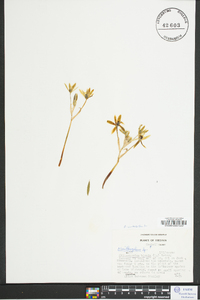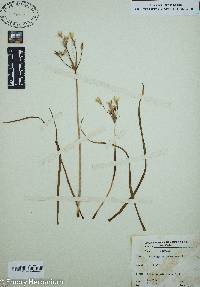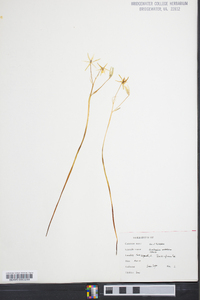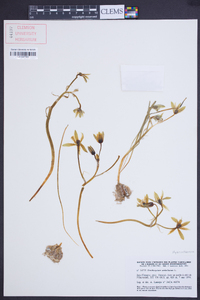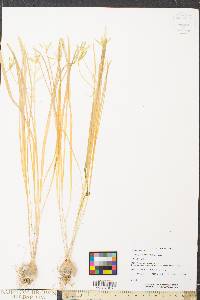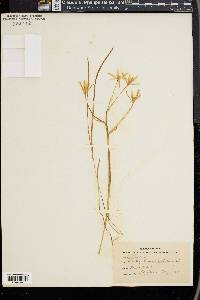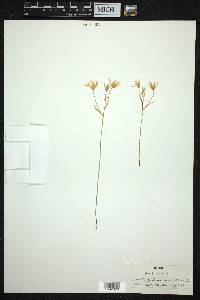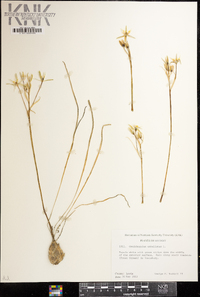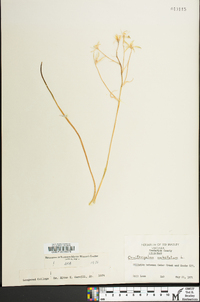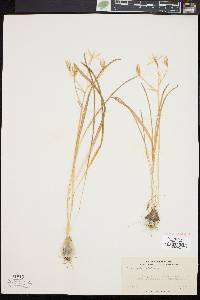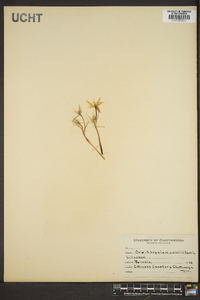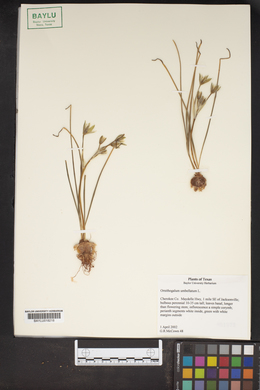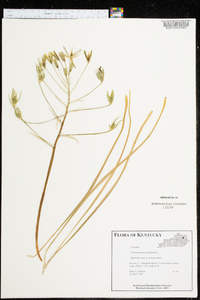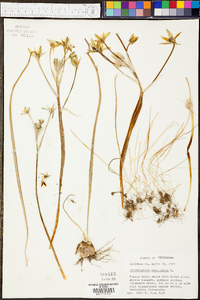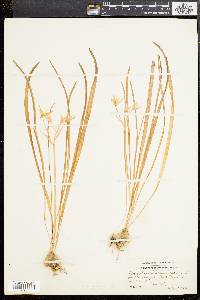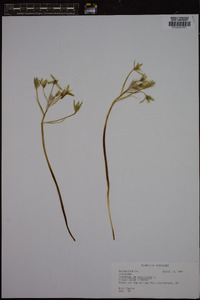Ornithogalum umbellatum
|
|
|
|
Family: Asparagaceae
Sleepydick, more...Star-of-Bethlehem
|
Plants (10-)20-30(-40) cm; bulbs renewed each year, 1-2 × 1-2.5(-3.5) cm; bulblets numerous. Leaves 4-6(-9); blade with white adaxial stripe, 20-30 cm × 3-5(-8) mm. Scape 1-3 dm. Inflorescences corymbose, (4-)8-20-flowered, flat-topped; bracts to 4 cm. Flowers erect; perianth opening flat or bowl-shaped in sun, closing at night, remaining closed on cloudy days; tepals white with wide green abaxial stripe, lanceolate to oblong-lanceolate, 15-22(-30) × 7-8 mm; stamens: outer 5-7 × 2-3 mm, inner 6-8 × 2-3 mm; filaments simple, flattened; anthers 2-4 mm; ovary ovoid to obovoid, strongly 6-angled, 5-6 mm; style 3-4 mm; lower pedicels 2-6 cm. Capsules oblong-ovoid. 2n = 18, 20, 27, 28, 35, 36, 42, 44, 45, 54, 72, 90, 108. Flowering spring. Roadsides, open forests, waste places, dumps; 0--1500 m; introduced; B.C., N.B., Nfld. and Labr.(Nfld.), N.S., Ont., Que.; Ala., Ark., Conn., Del., D.C., Ga., Idaho, Ill., Ind., Iowa, Kans., Ky., La., Maine, Md., Mass., Mich., Miss., Mo., Nebr., N.H., N.J., N.Y., N.C., Ohio, Okla., Oreg., Pa., R.I., S.C., S.Dak., Tenn., Tex., Utah, Vt., Va., Wash., W.Va., Wis.; Europe; n Africa; Asia; Middle East; expected elsewhere. Planted as a garden ornamental, Ornithogalum umbellatum produces many offsetting bulblets that are transported in soil and can become rampant weeds. Adding to the vegetative vigor of this species may be its aneuploid-polyploid karyology (T. W. J. Gadella and L. van Raamsdonk 1981; L. van Raamsdonk 1984). The flowers are noteworthy for their regularity in opening just before noon and closing again before sunset. Two digitalis-like glycosides, convallatoxin and convalloside, poisonous to humans and livestock, are found throughout the plant, but are concentrated in the bulbs and the flowers (W. H. Blackwell 1990; K. F. Lampe and M. A. McCann 1985; D. G. Spoerke Jr. and S. C. Smolinske 1990).
Perennial herb with a coated bulb 10 - 30 cm tall Leaves: basal, four to six, 20 - 30 cm long, 2 - 5 mm wide, linear, with a white stripe above. Inflorescence: a flat-topped cluster (corymb) of three to twenty flowers raised on a 10 - 30 cm long stalk and subtended by bracts. Flowers: upright, white, flat or bowl-shaped (in the sun). Tepals six, spreading, distinct, 1.5 - 2 cm long, 7 - 8 mm wide, lance-shaped to oblong lance-shaped, with a broad green stripe beneath. Stamens six. Fruit: a three-angled capsule, oblong to egg-shaped. Similar species: No information at this time. Flowering: mid-May to early June Habitat and ecology: Introduced from Europe. An ornamental that occasionally escapes from gardens and cemeteries. May be found in a variety of areas, including unkempt lawns, shaded vacant lots, and in turf at the edge of woodlots. Occurence in the Chicago region: non-native Notes: This plant is poisonous to humans and livestock. Etymology: Ornithogalum comes from the Greek words ornis, meaning bird, and galos, meaning milk. Umbellatum means "in umbels." Author: The Morton Arboretum Bulb renewed each year; lvs elongate, 2-5+ mm wide, with a white stripe on the upper surface; scape 1-3 dm; raceme 3-10-fld, the ascending pedicels longer than the internodes; bracts up to as long as the pedicels; fls erect; tep spreading, lance- oblong, 1.5-2 cm, white above, with a broad green midstripe beneath; ovary longer than the style; 2n=18-108. Native of Europe, escaped from cult. into roadsides and even fields and woods in our range. May, June. Gleason, Henry A. & Cronquist, Arthur J. 1991. Manual of vascular plants of northeastern United States and adjacent Canada. lxxv + 910 pp. ©The New York Botanical Garden. All rights reserved. Used by permission. From Flora of Indiana (1940) by Charles C. Deam This species has been reported as an escape in many parts of the state. I have found it as an escape in considerable numbers in fallow fields and in open woodland along streams in the counties shown on the map. In some instances it covered an acre or more. The plant grows in such masses that it crowds out all other vegetation, and where it is found it should be exterminated at once. …… Indiana Coefficient of Conservatism: C = null, non-native Wetland Indicator Status: FACU |
|
|
|

